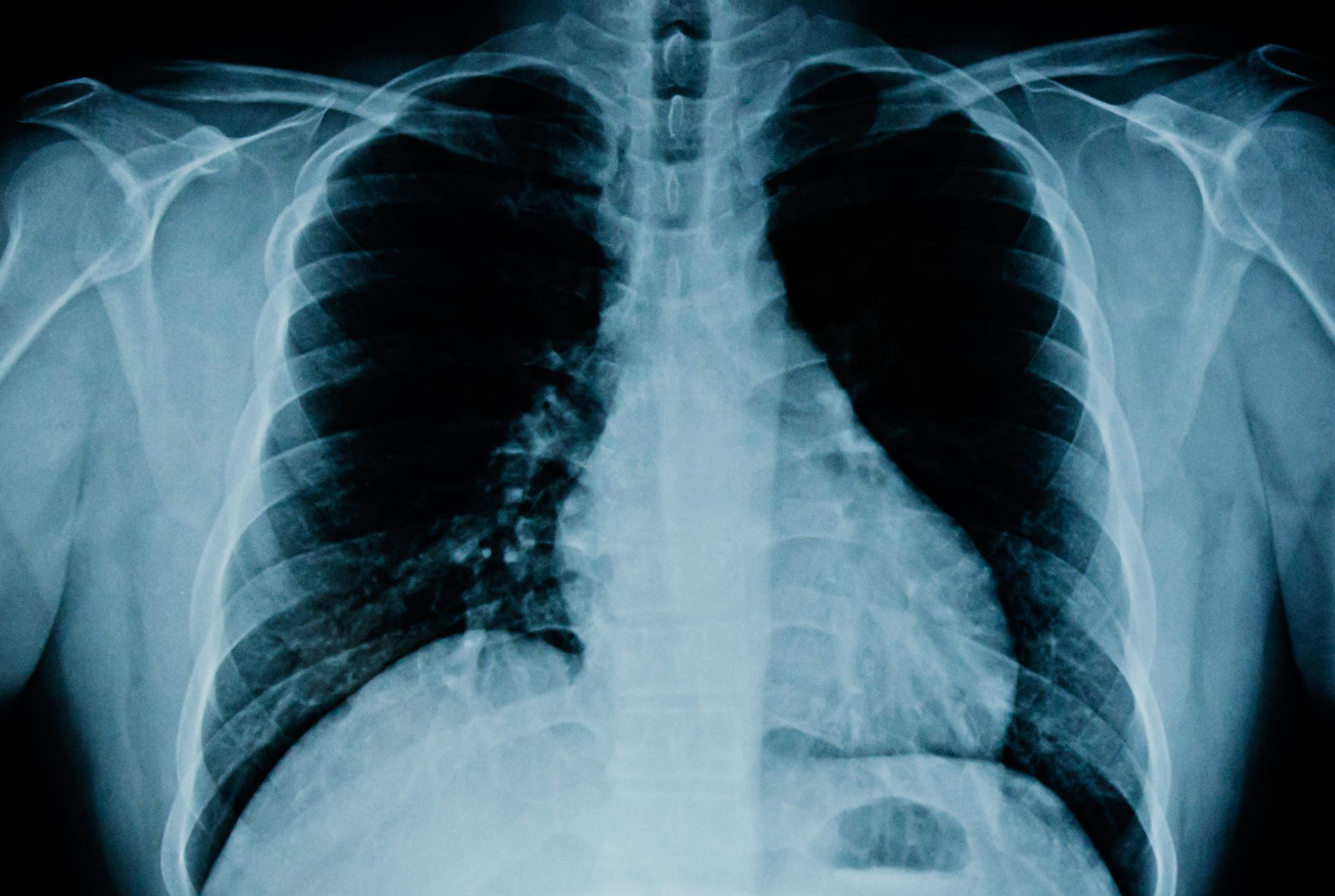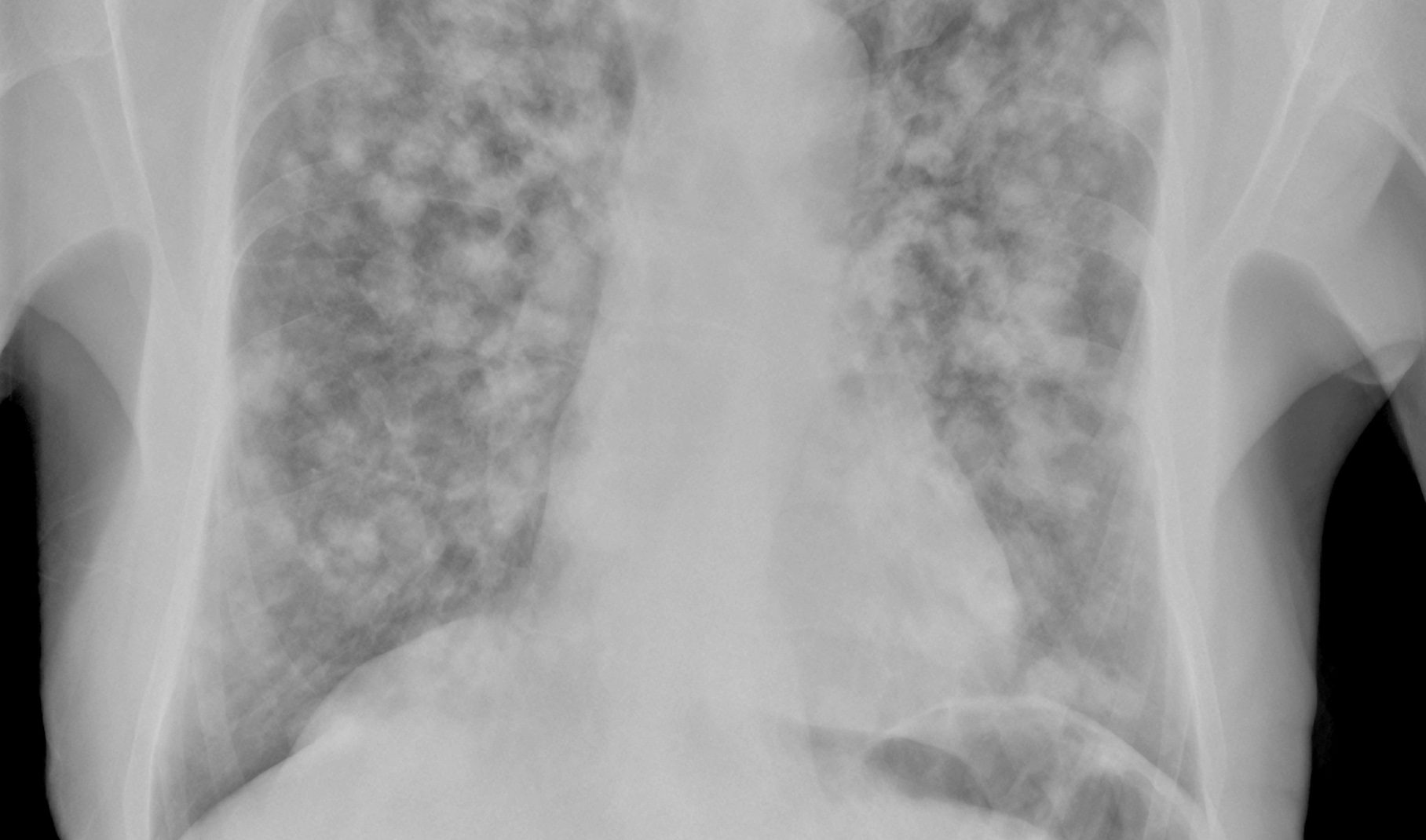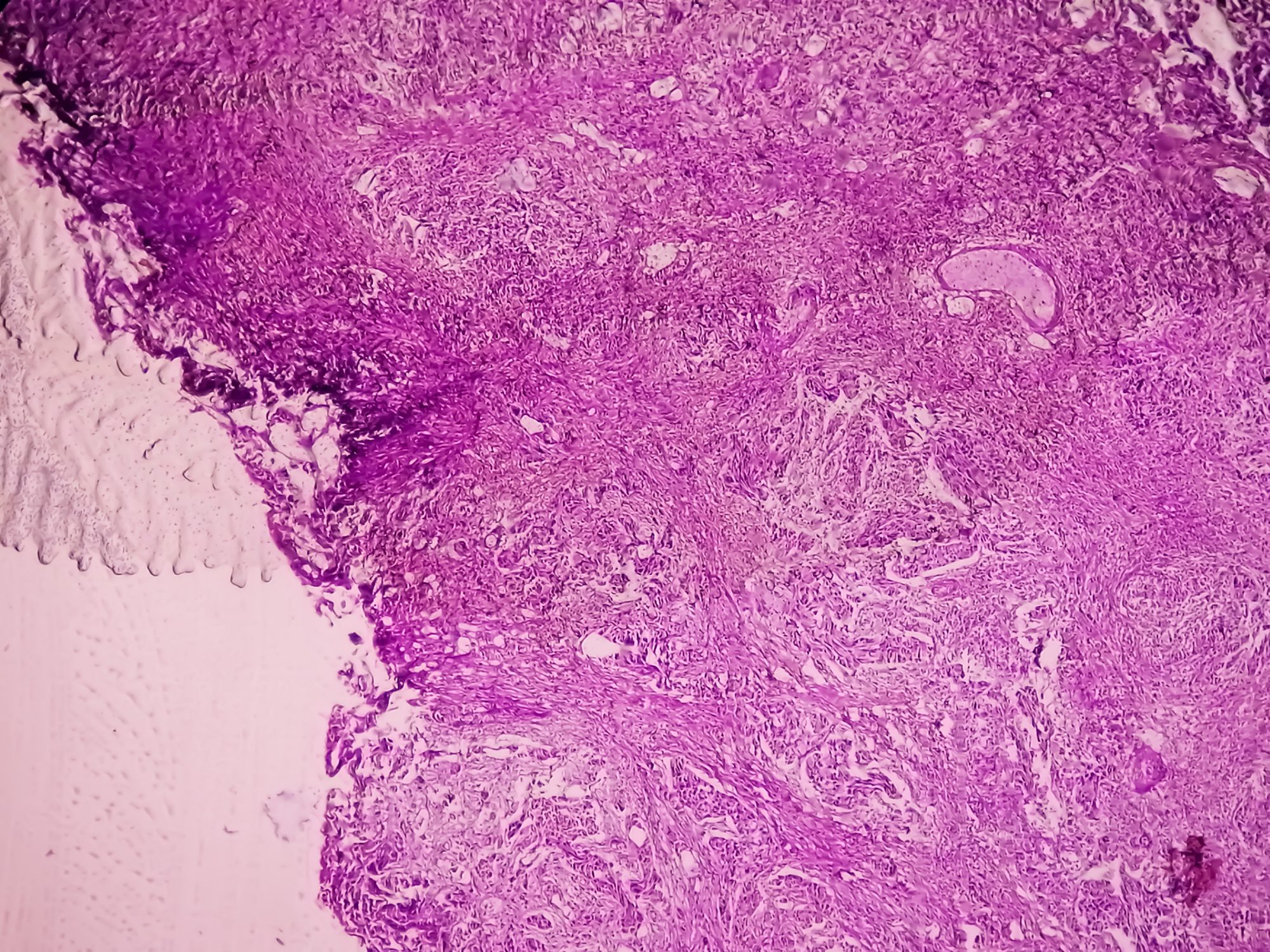Pulmonary hypertension (PH) affects approximately 1% of the world’s population. It is associated with a poor prognosis for patients. Various causes condition right ventricular afterload increase, which can lead to enlargement and hypertrophy of the right heart with right heart failure. Depending on the trigger of PH, it is divided into five different groups. Some patients develop the disease due to a genetic predisposition. In the majority of these patients, the BMPR2 gene is altered.
Pulmonary hypertension (PH) affects approximately 1% of the world’s population. It is associated with a poor prognosis for patients. Different causes condition right ventricular afterload increase, which can lead to enlargement and hypertrophy of the right heart with right heart failure [1]. Depending on the trigger of PH, it is divided into five different groups. Patients who have a genetic predisposition belong to group 1 PH, precapillary pulmonary arterial hypertension (PAH), and are characterized as hereditary PAH patients [2]. Precapillary PH is defined by elevated pulmonary arterial mean pressure (PAP) of >20 mmHg and pulmonary vascular resistance of >2 WU measured in right heart catheterization with normal pulmonary arterial occlusion pressure (PAWP) ≤15 mmHg [1]. PAH is one of the rare diseases with a prevalence of approximately 15-60 affected individuals per one million [3]. Due to hyperproliferation of the cells of the vascular wall in the precapillary sections of the pulmonary circulation, pulmonary vascular resistance and pulmonary arterial pressure increase [4]. A genetic cause is found in 85% of familial PAH cases and in approximately 15-20% of sporadic cases [5]. By far the most pathogenic variants (also called mutations) are in the bone morphogenetic protein receptor 2 gene(BMPR2). In addition, 17 other genes have been described to date that may be causative in the development of PAH [2,6]. Many of these genes are part of the BMPR2 signaling pathway, which therefore plays a central role in the pathogenesis of the disease. To date, there are three different classes of compounds approved for the treatment of PAH. These include prostaglandins, endothelin receptor antagonists, phosphodiesterase-5 inhibitors, or guanylate cyclase stimulators. The last two control the nitric oxide signaling pathway. All drugs approved to date act as vasodilators of the pulmonary arteries. This contrasts with a new molecular therapeutic approach that, for the first time, amplifies the BMPR2 signaling pathway and thus addresses the cause of PAH for the first time.
BMPR2 signaling pathway
As early as 1954, Dresdale first described a familial clustering of the disease [7]. In families with autosomal dominant inherited PAH, a linkage locus on chromosome 2q31-32 was identified in 2000 [8] and mutations of the BMPR2 gene were described [9–11]. To date, more than 800 pathogenic variants have been discovered in the BMPR2 gene [12]. Most mutations were identified in only one PAH patient. Recurrent mutations are summarized in Figure 1.
The BMPR2 gene encodes the transmembrane receptor bone morphogenetic protein receptor type 2 (BMPR2). It is part of the transforming growth factor-beta (TGF-β) superfamily, which plays a significant role in the regulation of cell growth, differentiation, tissue homeostasis, and development. The BMPR2 receptor regulates blood vessel growth and function, particularly in the lung. The expression of BMPR2 is reduced mainly in BMPR2 mutation carriers, but also in PAH patients without BMPR2 mutation [13,14]. The receptor is activated by bone morphogenetic proteins (BMPs) binding as ligands and triggering a signaling cascade (Fig. 2).
After binding of the ligands to the BMPR2 receptor, the latter forms a complex with a type 1 receptor (ALK 1/2/3/6). In the signaling cascade involved in PAH, the complex of BMPR2 with the type 1 receptor ALK1 and the co-receptor endoglin is of particular importance. This is followed by phosphorylation and activation of the Mothers Against Decapentaplegic Homolog (SMAD) proteins 1/5/8 inside the cell and the SMAD4 protein. Together they move into the cell nucleus and act as transcription factors (Fig. 2) . There they control the expression of various genes, which leads to an increase in apoptosis and inhibition of cell proliferation.
This antiproliferative BMPR2 pathway (also called BMP-GDF pathway) is in equilibrium with another pro-proliferative pathway of the TGF-β superfamily. In PAH, homeostasis of these two signaling pathways is no longer present and increased cell proliferation occurs. The counterpart of the BMPR2 pathway is the Activin pathway (also called TGF-β-Activin-Nodal pathway). This includes other ligands, type 1, type 2 receptors and SMAD proteins. The transmembrane receptors activin receptor IIA or IIB form a complex with a type 1 receptor (ALK 4/5/6) that is activated by the binding of activins. Instead of SMAD1/5/8 proteins, as in the BMPR2 pathway, SMAD2/3 are responsible for signal transduction here. These also bind to SMAD4 and move from the cytoplasm into the nucleus to activate or inhibit specific genes. Their effect on gene expression is pro-proliferative and thus shows a completely opposite effect to the anti-proliferative BMPR2 pathway described above.
If this balance is upset by pathogenic variants in involved genes, it shifts to a pro-proliferative expression pattern (Fig. 2) . The smooth muscle cells, endothelial cells and fibroblasts of the small pulmonary vessels hyperproliferate. This can lead to the formation of so-called plexiform lesions, which may be accompanied by, among other things, complete occlusion of the pulmonary arterioles.
Sotatercept, an activin ligand trap
Sotatercept is a drug that addresses the molecular causes of PAH for the first time. It is an “Fc fusion protein” consisting of the extracellular domain of activin receptor IIA and the Fc fragment of immunoglobulin IgG1. Thus, it binds all ligands that also bind to activin receptor IIA, and is therefore called an activin ligand trap. The imbalance resulting from reduced activity of the antiproliferative BMPR2 pathway in PAH is corrected by inhibition of the pro-proliferative activin pathway by sotatercept [15] (Fig. 3).
The Phase 2 PULSAR study evaluated the efficacy, tolerability and safety of sotatercept in PAH patients. Pulmonary vascular resistance as a primary end point was reduced by a mean of 3 Wood Units (WU) at 24 weeks in PAH patients already on two- to three-drug therapy [16]. In the subsequent phase 3 STELLAR trial, the primary endpoint of 6-minute walk distance increased by a mean of 34.4 m in the sotatercept group compared with the placebo group [15]. Based on the promising results, sotatercept is currently being investigated in four additional placebo-controlled Phase 3 trials. Sotatercept therapy represents a new approach to address the molecular alterations in PAH and will expand the therapeutic options in this disease in the near future.
Other PAH genes
In addition to the BMPR2 gene, 17 other genes are known to be causative for PAH [17]. Figure 4 shows the frequency of the different PAH genes.
For example, the co-receptors of BMPR2, ALK1(ACVRL1) and endoglin(ENG) [18,19], the BMPR2 ligand BMP9(GDF2) [20] or the SMAD9 gene [21] may be altered.
Mutations of the EIF2AK4 gene have been described as a cause of pulmonary veno-occlusive disease (PVOD) and pulmonary capillary hemangiomatosis, [22]. Both diseases belong to PAH but differ clinically and pathophysiologically by primary involvement of postcapillary venules and capillaries, respectively. In contrast, in idiopathic PAH, there are vascular changes in the precapillary arterioles. A clear distinction between PAH and PVOD is often clinically very difficult, but significant, as therapy with PAH-specific drugs can lead to pulmonary edema and thus significant deterioration in PVOD patients. Genetic testing can therefore contribute to a correct diagnosis and thus to the avoidance of incorrect treatment [2,23].
In some PAH families, coexisting pathogenic alterations were found in another PAH gene in addition to mutations in the BMPR2 gene. Only family members with a second mutation had developed PAH in this study [24]. Patients with PAH due to a congenital heart defect (PAH-CHD) were more likely to have mutations of the SOX17 gene [25]. Loss of Sox17 in animal models resulted in vascular malformations and cardiac defects [26].
In synopsis of these findings, it is therefore important that genetic testing of PAH patients or their family members includes all 18 PAH genes. The recommended method of choice for this purpose is PAH gene panel analysis using next generation sequencing [2]. This method was developed in Heidelberg in 2016 and is currently considered a standard procedure [27. While the vast majority of mutation carriers had PAH, in rare cases, a disease-causing pathogenic variant in the BMPR2 gene could also be detected in patients with chronic thromboembolic PH or PH in sarcoidosis [2].
Penetrance of the disease
The main pattern of inheritance of PAH is autosomal dominant with incomplete penetrance. This means that not all carriers will develop PAH during their lifetime. For pathogenic BMPR2 variants, penetrance is about 30%. Females are more likely to develop the disease (42%) than male carriers (about 14%) [28]. It is also possible for the disease to “skip” a generation and not manifest again until the following generation [29]. Reduced penetrance has also been observed in other PAH genes [20]. However, because there are fewer families with hereditary PAH and a gene alteration in another PAH gene, there is as yet no accurate data on penetrance in these genes. In the familial form of PVOD or pulmonary capillary hemangiomatosis, the penetrance is close to 100% [30]. In this case, an autosomal recessive inheritance pattern is present, i.e. one pathogenic variant in the EIF2AK4 gene was inherited from each parent pair.
Genetic testing in PAH is recommended in new PH guidelines
Genetic testing allows accurate diagnosis and helps prevent possible misdiagnosis. This is therefore recommended in the new PH guidelines, particularly in patients with hereditary PAH, idiopathic PAH, appetite suppressant-induced PAH, PVOD, pulmonary capillary hemangiomatosis, and patients with PAH associated with congenital heart disease, as well as in children with PAH [1]. The clinical picture and prognosis of patients depend, among other things, on genetic factors. Patients with pathogenic BMPR2 variants develop PAH at a younger age, are more severely hemodynamically affected, and are at greater risk of earlier death or transplantation [31]. In these patients, more intensive monitoring and more rapid escalation of therapy could be beneficial [2]. In addition, genetic testing of healthy relatives can identify carriers of pathogenic variants that have an increased risk of disease. These patients can then benefit from annual screening, which should include an echocardiological examination, as early diagnosis and initiation of therapy can also improve prognosis [32]. The new guidelines explicitly state that healthy relatives from families with genetic alterations should be offered genetic counseling and diagnostics [1]. If family members test negative for the familial mutation, they have the same risk of developing PAH as the normal population and clinical screening is not required [1].
Procedure of genetic testing
After genetic counseling, EDTA blood can be drawn from PAH patients and sent at room temperature to a PAH expert center specializing in genetics, such as the one in Heidelberg, with a request form filled out jointly by the patient and physician. In Heidelberg, the gene panel based on next-generation sequencing, which was developed and patented specifically for PAH, is used. Guidelines also recommend the use of a PAH gene panel as a new diagnostic standard [1]. The gene composition of the panel should be regularly reviewed and adapted to the latest research by adding newly discovered PAH genes.
After identification of (likely) pathogenic variants (mutations), relatives can be offered predictive testing for the familial variant after prior genetic counseling.
Conclusion
All patients diagnosed with idiopathic PAH, hereditary PAH, PVOD, appetite suppressant-induced PAH, congenital heart defect PAH, or childhood PAH should be offered genetic counseling and diagnostic testing [1,2]. This genetic testing should include all known PAH genes using a PAH gene panel based on next-generation sequencing. Since the discovery of the BMPR2 gene in 2000, the understanding of the pathogenesis of the disease has greatly improved. This is now benefiting PAH patients in a timely manner with the development of sotatercept. PAH is an excellent example of the value of finding causes in basic research, transferring knowledge to routine clinical practice in the form of genetic diagnostics, and even developing new therapeutic approaches.
Take-Home Messages
- Pulmonary arterial hypertension is a rare disease associated with a poor prognosis. It is characterized by increased pulmonary arterial pressure and pulmonary vascular resistance.
- Some patients develop the disease due to a genetic predisposition. In the majority of these patients, the BMPR2 gene is altered. However, pathogenic variants may also be present in other genes from the BMPR2 pathway or other signaling pathways.
- Sotatercept is the first new approach to pulmonary hypertension in clinical development that can strengthen the BMPR2 signaling pathway.
Literature:
- Humbert M, Kovacs G, Hoeper M, et al: 2022 ESC/ERS Guidelines for the diagnosis and treatment of pulmonary hypertension: Developed by the task force for the diagnosis and treatment of pulmonary hypertension of the European Society of Cardiology (ESC) and the European Respiratory Society (ERS). Endorsed by the International Society for Heart and Lung Transplantation (ISHLT) and the European Reference Network on rare respiratory diseases (ERN-LUNG). European Heart Journal 2022, 43(38): 3618-3731; doi: 10.1093/eurheartj/ehac237.
- Eichstaedt CA, Belge C, Chung WK, et al: Genetic counselling and testing in pulmonary arterial hypertension -A consensus statement on behalf of the International Consortium for Genetic Studies in PAH. Eur Respir J 2023; 61(2): 2201471; doi: 10.1183/13993003.01471-2022.
- Peacock AJ, Murphy NF, McMurray JJ, et al: An epidemiological study of pulmonary arterial hypertension. Eur Respir J 2007; 30(1): 104-109; doi: 10.1183/09031936.00092306.
- Machado RD, Koehler R, Glissmeyer E, et al: Genetic association of the serotonin transporter in pulmonary arterial hypertension. Am J Respir Crit Care Med 2006; 173(7): 793-797; doi: 10.1164/rccm.200509-1365OC.
- Pfarr N, Szamalek-Hoegel J, Fischer C, et al: Hemodynamic and clinical onset in patients with hereditary pulmonary arterial hypertension and BMPR2 mutations. Respir Res 2011; 12: 99; doi: 10.1186/1465-9921-12-993163544.
- Morrell NW, Aldred MA, Chung WK, et al: Genetics and genomics of pulmonary arterial hypertension. Eur Respir J 2019; 53(1); doi: 10.1183/13993003.01899-2018.
- Dresdale DT, Michtom RJ, Schultz M: Recent studies in primary pulmonary hypertension, including pharmacodynamic observations on pulmonary vascular resistance. Bull N Y Acad Med 1954; 30(3): 195-207.
- Grünig E, Janssen B, Mereles D, et al: Abnormal pulmonary artery pressure response in asymptomatic carriers of primary pulmonary hypertension gene. Circulation 2000; 102(10): 1145-1150.
- Deng Z, Morse JH, Slager SL, et al: Familial primary pulmonary hypertension (gene PPH1) is caused by mutations in the bone morphogenetic protein receptor-II gene. Am J Hum Genet 2000; 67(3): 737-744; doi: 10.1086/303059.
- Lane KB, Machado RD, Pauciulo MW, et al: Heterozygous germline mutations in BMPR2, encoding a TGF-beta receptor, cause familial primary pulmonary hypertension. Nat Genet 2000; 26(1): 81-84; doi: 10.1038/79226.
- Thomson JR, Machado RD, Pauciulo MW, et al: Sporadic primary pulmonary hypertension is associated with germline mutations of the gene encoding BMPR-II, a receptor member of the TGF-beta family. J Med Genet 2000; 37(10): 741-745.
- Southgate L, Machado RD, Gräf S, Morrell NW: Molecular genetic framework underlying pulmonary arterial hypertension. Nat Rev Cardiol 2000; 17(2): 85-95; doi: 10.1038/s41569-019-0242-x.
- Atkinson C, Stewart S, Upton PD, et al: Primary pulmonary hypertension is associated with reduced pulmonary vascular expression of type II bone morphogenetic protein receptor. Circulation 2002; 105(14): 1672-1678.
- Theobald V, Benjamin N, Seyfarth HJ, et al: Reduction of BMPR2 mRNA Expression in Peripheral Blood of Pulmonary Arterial Hypertension Patients: A Marker for Disease Severity? Genes (Basel) 2022; 13(5): 759; doi: 10.3390/genes13050759.
- Hoeper MM, Badesch DB, Ghofrani HA, et al: Phase 3 Trial of Sotatercept for Treatment of Pulmonary Arterial Hypertension. N Engl J Med 2023; doi: 10.1056/NEJMoa2213558.
- Humbert M, McLaughlin V, Gibbs JSR, et al: Sotatercept for the treatment of pulmonary arterial hypertension: PULSAR open-label extension. Eur Respir J 2023; 61(1); doi: 10.1183/13993003.01347-2022.
- Eichstaedt CA, Sassmannshausen Z, Shaukat M, et al: Gene panel diagnostics reveals new pathogenic variants in pulmonary arterial hypertension. Respir Res 2022; 23: 74.
- Chaouat A, Coulet F, Favre C, et al: Endoglin germline mutation in a patient with hereditary haemorrhagic telangiectasia and dexfenfluramine associated pulmonary arterial hypertension. Thorax 2004; 59(5): 446-448.
- Trembath RC, Thomson JR, Machado RD, et al: Clinical and molecular genetic features of pulmonary hypertension in patients with hereditary hemorrhagic telangiectasia. N Engl J Med 2001; 345(5): 325-334; doi: 10.1056/NEJM200108023450503.
- Gräf S, Haimel M, Bleda M, et al: Identification of rare sequence variation underlying heritable pulmonary arterial hypertension. Nat Commun 2018; 9(1): 1416; doi: 10.1038/s41467-018-03672-4.
- Nasim MT, Ogo T, Ahmed M, et al: Molecular genetic characterization of SMAD signaling molecules in pulmonary arterial hypertension. Hum Mutat 2011; 32(12): 1385-1389; doi: 10.1002/humu.21605.
- Eyries M, Montani D, Girerd B, et al: EIF2AK4 mutations cause pulmonary veno-occlusive disease, a recessive form of pulmonary hypertension. Nat Genet 2014; 46(1): 65-69; doi: 10.1038/ng.2844.
- Best DH, Sumner KL, Smith BP, et al: EIF2AK4 Mutations in Patients Diagnosed with Pulmonary Arterial Hypertension. Chest 2017; 151: 821-828; doi: 10.1016/j.chest.2016.11.014.
- Eichstaedt CA, Song J, Benjamin N, et al: EIF2AK4 mutation as “second hit” in hereditary pulmonary arterial hypertension. Respir Res 2016; 17(1): 141; doi: 10.1186/s12931-016-0457-x.
- Zhu N, Welch CL, Wang J, et al: Rare variants in SOX17 are associated with pulmonary arterial hypertension with congenital heart disease. Genome Med 2018; 10(1): 56; doi: 10.1186/s13073-018-0566-x.
- Lange AW, Haitchi HM, LeCras TD, et al: Sox17 is required for normal pulmonary vascular morphogenesis. Dev Biol 2014; 387(1): 109-120; doi: 10.1016/j.ydbio.2013.11.018.
- Song J, Eichstaedt CA, Rodríguez Viales R, et al: Identification of genetic defects in pulmonary arterial hypertension by a new gene panel diagnostic tool. Clin Sci (Lond) 2016; 130(22): 2043-2052; doi: 10.1042/CS20160531.
- Larkin EK, Newman JH, Austin ED, et al: Longitudinal analysis casts doubt on the presence of genetic anticipation in heritable pulmonary arterial hypertension. Am J Respir Crit Care Med 2012; 186(9): 892-896; doi: 10.1164/rccm.201205-0886OC.
- Pfarr N, Fischer C, Ehlken N, et al: Hemodynamic and genetic analysis in children with idiopathic, heritable, and congenital heart disease associated pulmonary arterial hypertension. Respir Res 2013; 14(1): 3; doi: 10.1186/1465-9921-14-3.
- Weatherald J, Dorfmüller P, Perros F, et al: Pulmonary capillary haemangiomatosis: a distinct entity? Eur Respir Rev 2020; 29(156); doi: 10.1183/16000617.0168-2019.
- Evans JD, Girerd B, Montani D, et al: BMPR2 mutations and survival in pulmonary arterial hypertension: an individual participant data meta-analysis. Lancet Respir Med 2016; 4(2): 129-137; doi: 10.1016/s2213-2600(15)00544-5.
- Montani D, Girerd B, Jais X, et al: Screening for pulmonary arterial hypertension in adults carrying a BMPR2 mutation. Eur Respir J 2021; 58: 2004229; doi: 10.1183/13993003.04229-2020.
InFo PNEUMOLOGY & ALLERGOLOGY 2023; 5(3): 12-16.















